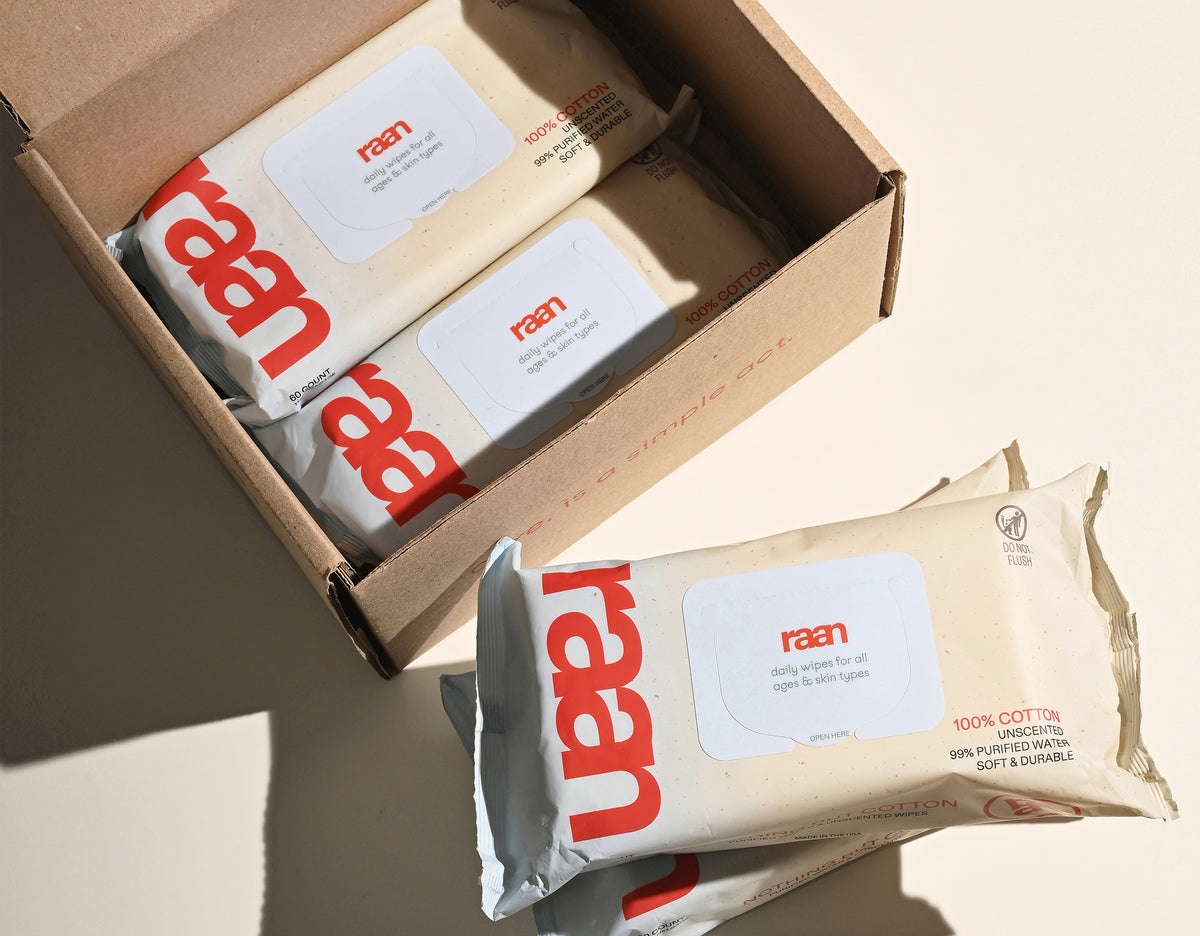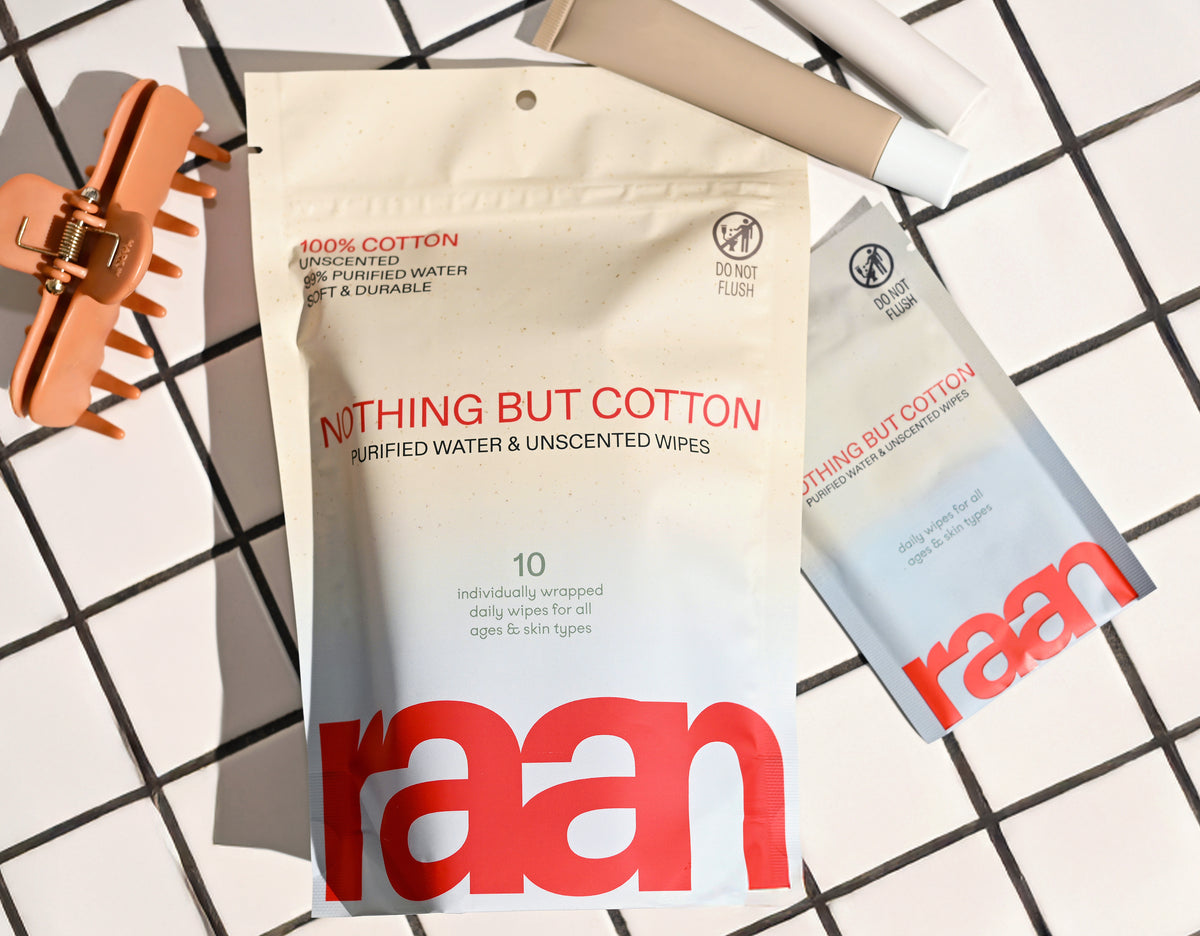Understanding Your Wipe Usage Needs
Whether you're a new parent staring at endless diaper changes or someone who's discovered the versatility of quality wipes for everyday messes, one question keeps coming up: how many wipes per month do you actually need?
Key Takeaways
- Determining your monthly wipe usage depends on your specific needs and lifestyle.
- New parents often require more wipes due to frequent diaper changes.
- Quality wipes are versatile and can be useful beyond just diapering.
- Understanding your wipe usage helps in planning and purchasing the right amount.
Table of Contents
It's not just about babies anymore. We're talking about a whole-family essential that handles everything from sticky toddler fingers to quick face refreshes, pet cleanups, and those inevitable spills that happen when life gets messy. The challenge isn't just figuring out the numbers—it's finding wipes that are actually worth using month after month.
Quick Answer
Most families use 300-800 wipes per month, depending on the number of children in diapers, household size, and usage beyond diaper changes. Newborns typically require 480-1,080 wipes monthly, while toddlers need 240-540 wipes. Factor in additional uses like face cleaning, hand wiping, and general messes for a complete estimate.
Here's what most people don't realize: the type of wipe you choose dramatically affects how many you'll actually need. Those flimsy, synthetic wipes that tear apart in your hands? You'll burn through them fast. Quality wipes made from unbleached, 100% cotton with just the essentials? They work harder, so you need fewer.
We're going to break down the real numbers—from newborn chaos to toddler adventures—and help you understand why the wipe itself matters just as much as the quantity. Because when you're dealing with sensitive skin, daily messes, and the endless cycle of cleaning up after life, you want something that actually works.
What Affects Your Monthly Wipe Usage

Before we dive into specific numbers, let's talk about the variables that make every family's wipe usage different. Understanding these factors helps you estimate more accurately—and avoid those panic moments when you realize you're down to your last pack.
Age and Development Stage
Your baby's age is the biggest predictor of wipe usage. Newborns go through 8-12 diaper changes daily, and those early weeks involve a lot of learning for both of you. You might use 3-6 wipes for a messy change while you're figuring out the most efficient cleaning technique.
As babies grow, their digestive patterns change. Around 2-3 months, many babies settle into more predictable routines, but teething can throw everything off again. Toddlers might have fewer diaper changes, but they make up for it with sticky hands, messy faces, and that incredible ability to find dirt everywhere.
Household Size and Multiple Users
Here's where the math gets interesting. One baby in diapers is manageable to calculate. Two kids under three? You're looking at potentially doubling your usage. But it's not just about diaper changes anymore.
Adults use wipes too—for quick face refreshes, hand cleaning, makeup touch-ups, and general hygiene. Pet owners know the value of having quality wipes on hand for paw cleaning and quick cleanups. Elderly family members might rely on wipes for daily care routines.
Wipe Quality and Durability
This is where most usage calculations fall apart. Standard wipes made from synthetic materials often require multiple wipes for a single task. They tear easily, don't hold moisture well, and leave you reaching for more.
Wipes made from unbleached, 100% cotton work differently. They're more durable, hold their shape when wet, and clean more effectively per wipe. This means you naturally use fewer per change or cleanup. When you're calculating monthly needs, the quality of your wipe can reduce your usage by 20-30%.
The ingredient list matters too. Wipes with just purified water, organic aloe, and food-grade preservatives maintain their moisture and effectiveness better than those loaded with synthetic additives. You're not compensating for poor performance with quantity.
Beyond Diaper Changes
Most usage estimates focus solely on diaper changes, but that's only part of the story. Quality wipes become your go-to solution for:
- Face and hand cleaning throughout the day
- Surface cleaning for high chairs, toys, and quick spills
- On-the-go freshening for adults and kids
- Pet care for paws and quick cleanups
- Travel situations where you need reliable cleaning
When you factor in these additional uses, your monthly consumption increases, but so does the value you get from choosing wipes that actually work for multiple purposes.
Calculating Your Monthly Wipe Needs
Let's get into the actual numbers. The math isn't complicated, but it helps to understand the patterns so you can adjust based on your family's specific needs.
The Basic Formula
Here's the straightforward approach: Average wipes per change × diaper changes per day × 30 days. But this baseline doesn't account for the reality of daily life with kids.
A more accurate formula includes additional usage: (Diaper wipes per day + general cleaning wipes per day) × 30 days. This captures the face wiping, hand cleaning, and surface cleanup that happens throughout the day.
Monthly Usage by Age Group
Key Insight: Wipe usage peaks during the newborn stage, decreases through infancy, then often increases again during the toddler exploration phase—just for different reasons.
| Age Group | Changes/Day | Wipes/Change | Diaper Wipes/Month | Additional Uses/Month | Total Monthly Range |
|---|---|---|---|---|---|
| Newborn (0-2 months) | 8-12 | 2-6 | 480-2,160 | 60-120 | 540-2,280 |
| Infant (3-12 months) | 6-8 | 2-5 | 360-1,200 | 90-180 | 450-1,380 |
| Toddler (12+ months) | 4-6 | 2-4 | 240-720 | 120-240 | 360-960 |
These ranges are wide because every baby is different. Some newborns have frequent, smaller messes that require fewer wipes per change. Others seem to save it all up for spectacular blowouts that require half a pack.
The Wipe Quality Factor
Here's where most calculations miss the mark. If you're using wipes that fall apart, don't hold moisture well, or require multiple wipes to clean effectively, you'll be on the higher end of these ranges—or exceed them entirely.
Quality wipes made from unbleached, 100% cotton with minimal, effective ingredients work differently. They're more absorbent, durable, and clean more thoroughly per wipe. Families who switch to higher-quality wipes often find their monthly usage decreases by 20-30%, even as their satisfaction increases.
The ingredient list matters for efficiency too. Wipes with 99% water and organic aloe maintain their moisture and cleaning power better than those loaded with synthetic additives that can interfere with performance.
Tracking Your Actual Usage
The best way to estimate your needs is to track your usage for a week. Keep a simple tally of wipes used for diaper changes versus other purposes. Multiply by four for a rough monthly estimate, then add 20% as a buffer for sick days, growth spurts, and unexpected messes.
Most families find they use about 40% of their wipes for diaper changes and 60% for everything else—face cleaning, hand wiping, surface cleanup, and general hygiene. This ratio shifts as kids get older and move out of diapers, but wipe usage doesn't disappear entirely.
Special Circumstances That Increase Usage
Certain situations will push your usage higher than average calculations suggest:
- Teething periods often mean more frequent, messier diapers
- Illness or dietary changes can double daily usage temporarily
- Sensitive skin conditions may require more frequent, gentler cleaning
- Daycare requirements might mean sending extra wipes daily
- Travel or outings where you need portable cleaning solutions
The key is choosing wipes that work well for all these situations. When you're dealing with sensitive skin or extra messes, you want something that's effective but gentle—not wipes that require multiple passes or leave residue behind.
Pro tip: Buy one month's worth based on your calculations, then track how quickly you go through them. Adjust your next order accordingly. Most families find their sweet spot within 2-3 months of consistent tracking.
Smart Strategies for Efficient Wipe Usage

Understanding your monthly needs is just the beginning. The real goal is making sure every wipe you use actually works—reducing waste while maintaining the cleanliness and care your family needs.
Choosing Wipes That Work Harder
Not all wipes are created equal, and this becomes obvious when you're going through pack after pack of ineffective ones. The material matters more than most people realize.
Wipes made from unbleached, 100% cotton have natural absorbency and durability that synthetic materials can't match. They hold their shape when wet, clean more thoroughly per wipe, and don't leave behind lint or residue. This means you naturally use fewer per task.
The formulation is equally important. Simple ingredient lists with purified water, organic aloe, and food-grade preservatives maintain moisture and effectiveness better than complex formulas with synthetic additives. You're not compensating for poor performance with quantity.
Multi-Purpose Efficiency
The most efficient families use their wipes for multiple purposes throughout the day. Quality wipes that are gentle enough for sensitive skin but effective enough for surface cleaning eliminate the need for multiple products.
This approach works when your wipes are actually designed for versatility. EWG Verified wipes with minimal ingredients are safe for faces, hands, and surfaces—reducing the number of different products you need to stock and track.
Storage and Freshness Tips
Dried-out wipes are wasteful wipes. Proper storage keeps your wipes effective for their intended lifespan:
- Keep packs sealed when not in use—even a few minutes of air exposure can start the drying process
- Store at room temperature away from direct sunlight and heat sources
- Use opened packs first and rotate your stock to maintain freshness
- Consider smaller pack sizes if you don't use wipes frequently—better to pay slightly more per wipe than waste dried-out ones
Quality packaging matters here too. Look for packs that use 70% less plastic than standard wipes while still maintaining moisture—better for the environment and often more effective at preserving freshness.
Reducing Waste Without Sacrificing Cleanliness
Efficiency isn't about using fewer wipes when you need them—it's about making sure each wipe you use is necessary and effective. Sometimes this means using more wipes for thorough cleaning rather than trying to stretch inadequate ones.
The goal is finding that balance where you're using exactly what you need, no more and no less. This happens naturally when you have wipes that work well for your family's specific needs and skin sensitivities.
Making Smart Purchasing Decisions
Now that you understand your usage patterns, let's talk about buying strategically. The goal isn't just getting enough wipes—it's getting the right wipes that work efficiently for your family's specific needs.
Bulk Buying vs. Regular Purchases
The math on bulk buying seems straightforward, but there are hidden factors that affect whether it's actually cost-effective for your family.
Pros of Bulk Buying
- Lower cost per wipe (typically 15-30% savings)
- Fewer shopping trips and less mental load
- Always having wipes available for emergencies
- Consistent supply during illness or high-usage periods
Cons of Bulk Buying
- Higher upfront cost and storage space requirements
- Risk of wipes drying out before you use them
- Less flexibility if your needs change
- Potential waste if you overestimate usage
The sweet spot for most families is buying 2-3 months' worth at a time. This captures most of the cost savings while minimizing waste and storage issues.
Quality vs. Quantity Considerations
Here's where the real math gets interesting. Higher-quality wipes often cost more per unit but require fewer wipes per task. When you factor in effectiveness, the cost difference often disappears entirely.
Wipes made from unbleached, 100% cotton with simple, effective formulations typically reduce usage by 20-30% compared to standard synthetic wipes. If you're using 800 wipes per month at $0.05 each versus 600 higher-quality wipes at $0.07 each, you're actually saving money while getting better performance.
The ingredient quality matters for efficiency too. EWG Verified wipes with 99% water and organic aloe maintain their cleaning power and moisture better than wipes loaded with synthetic additives that can interfere with performance.
Subscription Services and Auto-Delivery
Subscription services can be convenient, but they work best when you have a clear understanding of your actual usage patterns. Most services allow you to adjust frequency and quantity, but the default settings are often based on industry averages that may not match your family's needs.
Track your usage for 2-3 months before committing to a subscription schedule. It's better to start with less frequent deliveries and adjust upward than to accumulate excess inventory.
Seasonal and Developmental Adjustments
Your wipe needs will change as your children grow and as seasons shift. Summer often means more outdoor messes and frequent hand cleaning. Winter might bring more illness-related usage spikes.
Plan for these variations by keeping a small buffer stock—about 20% above your calculated monthly needs. This prevents emergency store runs while avoiding excessive stockpiling.
Smart shopping tip: Buy one month's worth of a new wipe brand before committing to bulk purchases. Test how they work for your family's specific needs—skin sensitivity, cleaning effectiveness, and durability—before investing in larger quantities.
Beyond the Numbers: What Really Matters

While calculating monthly wipe needs is useful, the real goal is finding products that work reliably for your family's daily reality. The best wipe usage strategy is one that gives you confidence in what you're using and reduces decision fatigue.
Ingredient Transparency and Peace of Mind
When you're using hundreds of wipes per month on your family's skin, ingredient quality becomes more important than quantity calculations. Simple formulations with purified water, organic aloe, and food-grade preservatives eliminate guesswork about what you're putting on sensitive skin.
This transparency matters especially during high-usage periods—illness, teething, or developmental phases when you're using more wipes than usual. You want products that are safe for frequent use without causing irritation or buildup.
Environmental Impact of Monthly Usage
Using 500-1,000 wipes per month adds up to significant environmental impact over time. The material and packaging choices you make multiply across thousands of wipes annually.
Wipes made from 100% cotton biodegrade naturally, unlike synthetic materials that persist in landfills. Packaging that uses 70% less plastic than standard wipes reduces waste without sacrificing product freshness or effectiveness.
These environmental considerations don't require sacrificing performance or convenience—they're about choosing products designed with both effectiveness and sustainability in mind.
Building Sustainable Habits
The most successful approach to wipe usage is developing habits that work long-term. This means choosing products that perform consistently, buying in quantities that match your actual usage, and adjusting as your family's needs evolve.
Quality products with minimal, effective ingredients and durable cotton construction create predictable performance. You know what to expect from each wipe, which makes usage planning more accurate and reduces waste from ineffective products.
The bottom line: Your monthly wipe needs will vary based on your family's specific circumstances, but choosing high-quality, transparent products makes those numbers more predictable and manageable. Focus on finding wipes that work reliably for your family's daily needs, then let the math follow naturally.
Whether you need 400 wipes per month or 1,200, the goal is the same: products that clean effectively, treat skin gently, and give you confidence in what you're using on your family every day. When you find wipes that meet these criteria, the quantity planning becomes much simpler.
For more on how to estimate your family's needs, see how many wipes do I need and review US households' usage frequency of pre-moist wipes and cloths for broader trends.
Frequently Asked Questions
How long will 900 baby wipes last?
The length of time 900 baby wipes will last depends on your usage habits, but generally, if you use about 20 wipes a day for diaper changes, spills, or quick cleanups, 900 wipes can last around 45 days. Keep in mind, families with older toddlers or multiple children may go through wipes faster, while occasional use can stretch them longer.
How long will a pack of wipes last?
A single pack of wipes usually contains between 50 to 100 wipes, which can last anywhere from 2 to 5 days depending on your daily needs. If you’re using wipes for quick face and hand cleanups along with diaper changes, expect to go through a pack faster. Knowing your routine helps you plan when to restock without running low.
How many baby wipes should I stockpile?
Stockpiling wipes depends on how many people are using them and how often. For a new parent or small household, keeping a supply that lasts one to two months—around 600 to 900 wipes—provides a comfortable buffer without overbuying. This avoids waste and ensures you always have enough on hand for everyday messes.
How much do baby wipes cost monthly?
Monthly costs for baby wipes vary based on brand, quantity, and usage frequency, but on average, families spend between $10 to $30 a month. Choosing wipes made with safe, transparent ingredients might be slightly higher upfront but often means better value in terms of skin safety and environmental impact.
How long does a box of Costco wipes last?
Costco boxes typically contain large quantities, often around 800 to 900 wipes, so they can last a month or more for an average family using about 20 to 30 wipes a day. Bulk packaging is convenient but consider your storage space and how quickly you go through wipes to avoid drying out or product waste.
How long are disinfecting wipes good for?
Disinfecting wipes generally have a shelf life of about two years from the manufacturing date when unopened. Once opened, their effectiveness depends on keeping the packaging sealed to prevent drying out. Unlike personal-care wipes, disinfecting wipes contain active ingredients that can degrade over time, so check expiration dates to ensure proper function.






